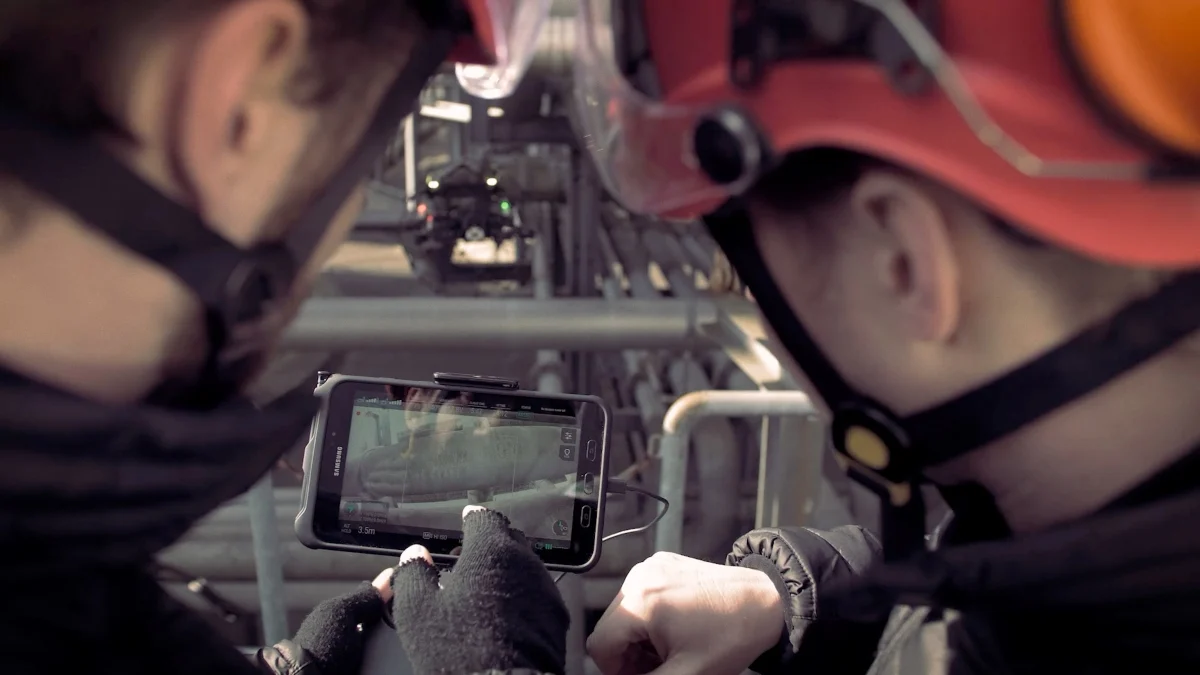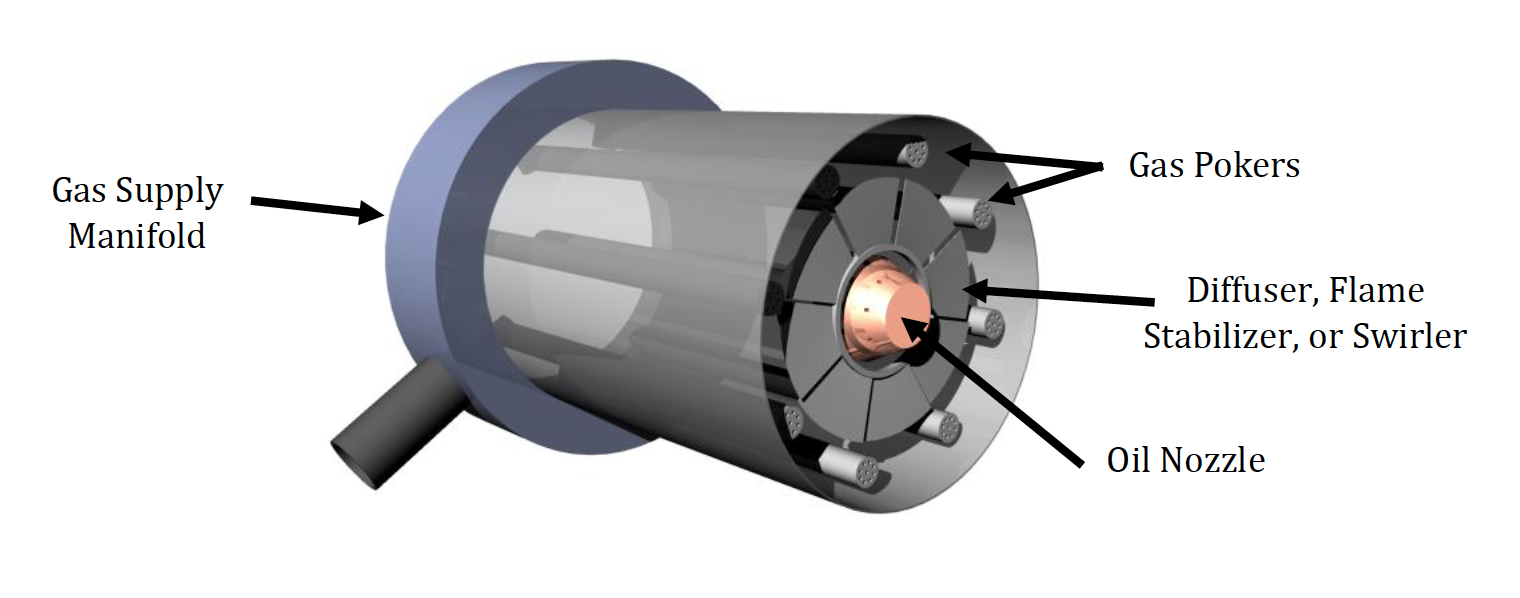In a recent study, Boiler Room Consulting (BRC), an independent advisory firm, explored the potential of reducing greenhouse gas (GHG) emissions—especially CO2—by enhancing boiler inspections with the assistance of Flyability's collision-resistant drones. The findings were striking.
BRC discovered that increasing the frequency of boiler inspections, supported by Flyability drones, could potentially decrease CO2 emissions by up to 649 metric tons annually.
To learn more about how this was achieved, keep reading.

### Enhanced Boiler Inspections = Lower Emissions
Most boiler inspections are carried out annually. This means that issues within the boiler might remain unnoticed for extended periods. Although these issues may not immediately affect the boiler's lifespan, they can still lead to leaks and other emissions that harm the environment.
By conducting more frequent inspections, companies can detect problematic areas earlier and take corrective measures. This approach can also help businesses save money by improving the maintenance of costly equipment like boilers and pressure vessels, thus extending their operational life.
### Why Aren't Boiler Inspections More Frequent?
The primary reason is cost. In a standard boiler inspection, inspectors physically enter the boiler to perform a meticulous visual check. They visually assess every component to gather data on its condition. Many boilers are large, requiring scaffolding for inspectors to work safely. Setting up scaffolding is expensive, often costing thousands to tens of thousands of dollars per inspection.
The time needed to build and dismantle scaffolding also leads to downtime for the boiler, which translates into significant revenue losses for the company—sometimes reaching hundreds of thousands of dollars daily.
Due to these high costs, most companies opt to inspect their boilers only once a year, which aligns with legal requirements in many countries.
### How Can Flyability Drones Help Increase Inspection Frequency?
Using drones instead of humans to collect visual data inside boilers can drastically cut inspection costs, sometimes by as much as 90% or more. This cost reduction enables companies to increase the frequency of inspections.
However, not just any drone works for boiler inspections. Boilers present numerous challenges for flying drones due to their confined spaces and obstacles that could easily crash a regular drone. Additionally, the drone must stabilize itself during flight and have a light source to enable inspectors to interpret the depth of various features on walls or ceilings, such as pitting, grooves, or welds.
Flyability drones are specifically designed for confined-space inspections like those in boilers, addressing all these challenges. Both the Elios and Elios 2 models feature a protective cage that allows the drone to collide and continue flying, making them ideal for boiler inspections.
Check out this video showcasing a boiler inspection conducted with the Elios 2:
### Measuring the Environmental Impact of Increased Inspections
BRC aimed to verify whether more frequent inspections could indeed lower the total CO2 emissions of a boiler. For this, they chose to focus on the boiler's combustion head.
The combustion head was selected because known failures in this area can lead to elevated CO production, which increases CO2 emissions, and because combustion head failures can occur gradually without causing immediate issues that demand urgent maintenance.

A combustion head experiences extreme stress during operation, often facing temperature fluctuations of hundreds of degrees Fahrenheit. This continuous heating and cooling can lead to failures that start small but worsen over time.
Failures can manifest in various ways, such as gas manifold cracking, flame diffuser fouling, general cracking or deterioration, gas spud or poker deterioration or plugging, or fuel oil nozzle plugging or deterioration.
[RoNik Inspectioneering tested the Elios 2 in 15 different rigorous inspection scenarios—read about their findings here.]
### BRC’s Combustion Head Experiment
#### Theory to Test
A damaged combustion head increases a boiler's CO2 emissions.
A faulty combustion head produces higher levels of CO in the boiler's flue gases, impacting combustion efficiency negatively, leading to higher CO2 emissions.
#### Questions to Answer
1. Does a damaged combustion head increase CO2 emissions?
2. If yes, by how much?
3. Are emissions affected differently depending on the type of fuel?
4. Could more frequent inspections detect a damaged combustion head before CO2 emissions rise?
#### Testing the Theory
The boiler used in BRC's study was a typical 150,000 lb per hour, 350 PSIG industrial watertube (IWT) steam boiler.
BRC analyzed three fuel types within the boiler: Natural Gas, #2 fuel oil, and #6 fuel oil with average carbon, hydrogen, oxygen, and sulfur content and associated gross calorific heating values.
For each fuel type, BRC compared the flue gas in the boiler when the combustion head was in good condition versus when it was damaged.
The results were significant.
Though the damaged combustion head only caused a 0.35% to 0.41% loss in boiler efficiency, the corresponding CO2 emissions rose by between 442 and 649 metric tons annually.
#### Cause of Increased CO2 Emissions
A malfunctioning combustion head raises CO levels in the boiler's flue gases, reducing combustion efficiency.
In the chart above, you can see that the Base Case (damaged combustion head) emitted 1,500 ppmv (Parts Per Million by Volume) of CO into the boiler, while the combustion head in good condition emitted only 50 ppmv of CO.
The increased CO released into the boiler by the damaged combustion head required more energy from the boiler to maintain normal operations. This loss in efficiency, as shown in the chart, is 0.35% to 0.41%, and results in higher CO2 emissions.
[Download the Full Study]
#### Answers to BRC’s Questions
1. Does a damaged combustion head increase CO2 emissions? Yes.
2. By how much? Between 442 and 649 metric tons per year, depending on the fuel type.
3. Are emissions affected differently depending on the fuel type? Yes, as seen above.
4. Could more frequent inspections detect a damaged combustion head before CO2 emissions rise? Yes. More frequent inspections increase the likelihood of detecting combustion head failures early, thereby reducing the potential for increased CO2 emissions.
### Conclusion
BRC concluded that enhanced inspections supported by Flyability's collision-resistant drones can reduce CO2 emissions by 442 to 649 metric tons annually—a substantial reduction, even for a single boiler.
It's crucial to note that BRC focused solely on one potential type of damage.
A lot can go wrong in a year, particularly in an asset exposed to such drastic temperature changes, and other forms of damage could also lead to the release of substances harmful to the environment.
"The use of collision-resistant drone technology makes more frequent inspections feasible by simplifying processes, reducing potential safety risks for personnel conducting inspections, and lowering overall costs, including operational expenses."
- From BRC's final report
Increasing inspections also brings additional benefits for companies.
Beyond reducing the emission of greenhouse gases and other harmful substances, using drones instead of people for inspections in confined spaces ensures that personnel are kept away from potentially hazardous situations.
Moreover, increased inspections can save companies money. From a financial standpoint, boosting boiler efficiency leads to savings for the company by reducing overall operating costs and potentially extending the boiler's lifespan.
[Download the Full Study]
Tungsten Alloy Arrowhead For Archery
Tungsten Alloy Arrowhead For Archery,Tungsten Metal,Tungsten Alloy Arrow Point,Tungsten Heavy Alloy Stabilizer
Zhuzhou Jiuding Metal Technology Co., Ltd. , https://www.zztungstenheavyalloy.com